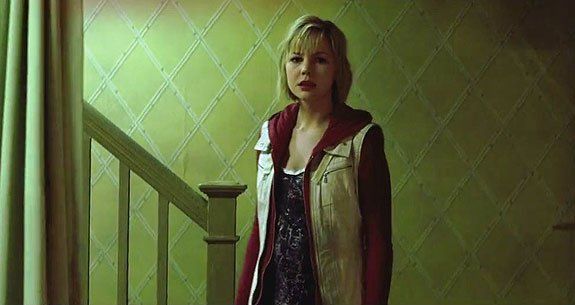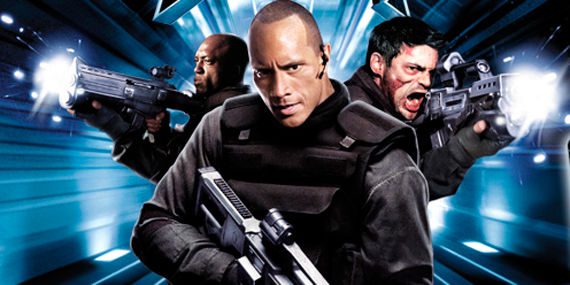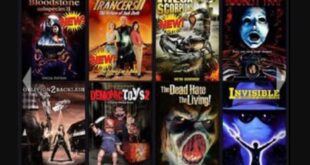Growing up as a young nerd, I was one of those rare types that were into both movies and video games. They always went hand-in-hand for me; one was a type of medium that I could control and be an active part in, and the other would allow me to relax and sit back as worlds came alive before me. They were both outlets for the imagination, for inspiration, and for a way to experience things and places that I would never be able to in real life. (Even the sports movies and games were great for me, because God knows my head was the magnet in almost every sport I attempted. Go figure.)
So when it came to movies that were adapted from video games, I was ecstatic for the possibilities. The first adaptation I ever saw was the now-infamous Super Mario Bros movie – you know the one, with Bob Hoskins and Dennis Hopper and, well, everything else that that movie had – and the prospect of it was so awesome to me before I saw it. I couldn’t even begin to imagine how amazing it would be to see Mario and Luigi on a grand journey, having their own awesome adventure while I watched, in awe. And Bowser! What would he look like? How could it not be great?

Oh, there were plenty of ways. Plenty. Of. Ways. The feeling of disappointment and general confusion as I saw the end credits roll is still with me to this day. I was hurt. I was pissed. How the hell could they do that to this series that I loved so much? How could something so god-awful – something that barely resembled the beginning product – come from something so pure and magical?
As I got older and my likes turned to horror, I saw the same situation time and time again: a video game series that I loved and cared about, a film adaptation that would be announced, and the inevitable pile of fecal matter that would be spewed forth from whatever director / writer combo was attached to it, usually this fuckin’ guy. It was almost laughable. “Oh, a BloodRayne movie? Now that’s gonna suck. No puns intended.”
So what gives? Why is this a near-inevitability that video game adaptations, namely horror game adaptations, have an extremely low probability for quality? Why is it so damn hard for anyone to get it right? Some of the answers are obvious, but others come with certain years of watching shitty movies…
- The Plot Is Always Sacrificed For The Setting

For our first example, let’s take a look at the Silent Hill series of movies – specifically the second in the franchise, Silent Hill: Revelation. The movie’s plot is loosely (and I do mean loosely) based on the plot for Silent Hill 3 in which the protagonist, a young woman named Heather, tries to get to the bottom of all the rust stains and monsters suddenly popping up around town as her own life is seemingly entwined in the history of the famous fog-filled city. Sounds halfway interesting, right?
The main problem with the film version isn’t that the director (Michael J. Bassett) didn’t like the setting or the monsters – on the contrary, the effects and the style of the movie look pretty damn awesome and are generally faithful to the game – but the issue is that he simply stopped there. The reason why the Silent Hill games are so compelling is because they’re full of psychological and moral quandaries for our heroes to trudge through; the metaphorical fog versus the real fog. In the film, we simply see our protagonists moving from one set piece to the next, with no real character arcs to speak of.
A connection that film directors never seem to have with games is that in a memorable one, the player / viewer goes on a journey with the main characters, not a tour. For the characters to become fully fleshed out, they need a good plot to work within, and for the most part in these films, there’s hardly any plot to speak of. It’s just one action shot after action shot, with some boring exposition sprinkled in for pacing (more on that later). You can pour millions into your fancy effects and set designs, but without an interesting plot or compelling characters, viewers will forget those settings all the same. Speaking of characters…
- The Characters Are Flatter Than Cardboard

Again, this is another connection that seems lost on the majority of filmmakers. Even though there is a player controlling the avatar within the game, the most memorable games have characters that are relatable, with feelings, reactions to environments and growth as they overcome the numerous obstacles they’re faced with. These are characters that, despite the fact that we control their physical movements and actions, have personalities that resonate with the player, becoming three-dimensional and believable.
If characters in horror game films are lucky enough to have personalities (which, let’s be real here, are few and far between), usually they’re simply relegated to one emotion for the duration. This is a problem that isn’t unique to simply horror game adaptations, but to horror movies in general (see also: most of the slasher genre), and when coupled with a boring, flat story, these stereotypical character types wear out their welcome faster than a Jehovah’s Witness with a recording of “Hungry Like The Wolf” stuck on repeat. (Why they’d have that, I wouldn’t even want to ask. You see? Overstaying their welcome.)
Just take the Alone In The Dark movie, for example. If you’ve seen that pile and can name me one, just one of the characters from it a week after you saw it, I would be very surprised (and very impressed at your memory; are you a cyborg, by chance?) Everyone is so damn one-note. When you see one of the main characters get killed partway through the movie, you could care less. When the forced love story rears its ugly head, it’s laughable at best. A rivalry between two of the characters? Who are these people? Did I meet them at some point?
Without interesting characters, the audience has exactly zero ways to relate to the movie on an emotional level. Given that humans are emotional creatures and that taking advantage of that is a surefire way to make them love your movie, it would behoove filmmakers to consider adding in a liiiiiiittle more when it comes to their characters and story. Of course, the opposite is just as bad…
- They Try And Fit Too Much Crap In

Have you ever been sitting in a movie theatre and one of the characters starts expositing about “Long ago…” or “Once, thousands of years back… or “There was once a time when…”? This is usually the time when the audience stops caring about the plot and are pulled out of the moment because the writer feels they really, really need to explain an abnormal element of the film; in other words, what is usually known as the “Info Dump.”
Info Dumps can come at numerous moments in a film – at the beginning, in the middle, hell even at the end of the movie right before a big fight sequence or a secret move that the hero was saving – but whenever they show up, you bet your ass that your brain is going to silently click off and you’re gonna zone out for the next few minutes. Why is that? Let me explain.
When you’re watching a movie that you enjoy, you are “in” the movie’s world; that is to say, your main focus is within the world of the movie. If said world is convincing enough, you’ll be able to follow the characters through their travels without having to ever question or think about what is happening within that world. A crazy monster pops out of the floor? What the hell is that? Run, heroes, run! You care about them, and you want them to survive – usually, your brain is more willing to shoot first and ask questions later if you’re invested in the movie’s universe.
However, an Info Dump can completely pull you out of the moment when done incorrectly or heavy-handedly. It’s the voice of reason, the voice of hand-waving, the voice that says, “Well, you see, this is why we, the writers, created this thing or element within the movie.” The act of Info Dumping, when done poorly, completely breaks the fourth wall, the suspension of disbelief that the audience has in the film. And it happens all the fucking time in video game adaptations.
Take the film version of BloodRayne: there are no less than four Info Dumps in the film – practically everything is explained, from the vampires to their weaknesses to the artifacts needed to defeat them. The problem is, if the film showed us these elements and how they functioned within the world of the movie, then we wouldn’t need these long-winded explanations and unnecessary hand-holding moments. At best, it’s boring as hell; at worst, it’s just plain patronizing to the audience. Which, of course, leads to my next point…
- They Don’t Trust Their Audience

I think it’s a fair time to make at this point in the article: moviegoers in the 21st Century are fucking smart. Say what you will about trends of the latest rom-com or how certain awful horror films will always break box office records, but modern-day film audiences are incredibly adapted to their environments at this point in the game. Movies are still a medium that many young people enjoy together, and as such, the saturation of the market has become incredibly dense, especially in the last decade.
So then it comes off as even more patronizing when filmmakers decide that an audience couldn’t possibly be bothered to put two-and-two together in a make-believe universe, and either a) Figure out certain components of the canon mechanics for themselves through vicarious observation, or b) Roll with the punches and accept that certain things just are, and that they don’t need explanation to every little damn thing that isn’t normal.
I mean, not to ride the BloodRayne Hate Train (even though it is fun and cheap), but good lord Uwe Boll, we’re not total dumbasses. I’m sure the evil vampire is her dad – that would make tons of sense anyway – and it probably would have been way, way more effective if you hadn’t bludgeoned us with the prospect repeatedly throughout the movie. Hell, we may have even cared if it was revealed in a dramatic way – maybe it would have given poor Rayne an actual character instead of Sexy Vampire Chick that Screws (at least) One Dude Before the Credits. Of course, there was so, so much more wrong with it than that, but it could have been a step in the right direction!
- It’s Boring When You Can’t Play The Movie

But ultimately, there’s still a major disconnect that horror game adaptations always fall victim to – in part due to a build-up of all the reasons above – is that in the end, these directors feel that they have to make a video game version of a movie, not a movie version of a video game.
What I mean is, oftentimes these movies are made and constructed similarly to how video games are constructed: make a bunch of different levels in different settings, usually have a boss or big climactic fight at the end of each sequence, rinse, repeat until happy ending is achieved. While this formula works with video games, the thing that no one seems to notice is that it never, ever works in cinema.
Why? It’s a simple reason: It’s boring when you can’t play the movie like a video game. When we’re shown a series of levels to complete, it really gets to be a bore when we’re not the ones actively beating those levels. There’s no sense of achievement that comes with the work of playing the game; it’s more like watching your sibling play through the entire thing without giving you a turn. When you’re not the one in control of the level-busting stimuli, you get antsy. You get bored. Because inevitably it’s the control that makes video games so addicting and compelling to us. What’s the point of watching someone else play Doom (literally in first-person POV) if we can’t? Where’s the fun in watching forgettable characters shoot their way through demon hordes? What’s in it for us?
So what to do then? How do you solve this problem? It’s easy, actually: make the movie a goddamn movie and not a video game. Put some cinematic elements into the thing. Take away the transparent level-progression pattern and massively staged, heavily telegraphed and predictable boss fights. Trust your audience. Give us some complexity. Give us characters that we can relate to. Give us some interesting narratives, and challenging plot lines. Show, don’t tell. Give us a movie, not a video game. By doing so, you’ll end up pleasing both camps. And who knows, maybe you’ll actually get a good movie out of it, too.
Author’s Note: Maybe I was a little harsh on BloodRayne in this editorial, but holy shit have you guys seen it?! Tell me that’s not just the worst thing you’ve ever seen. I feel bad for everyone involved. Except for this guy.
 PopHorror Let's Get Scared
PopHorror Let's Get Scared




